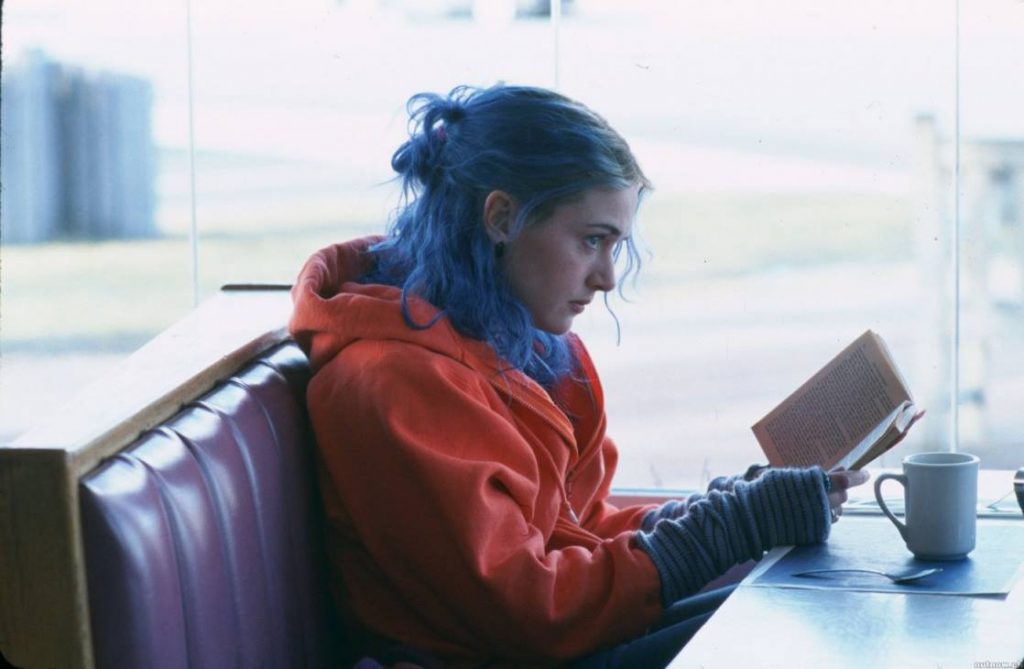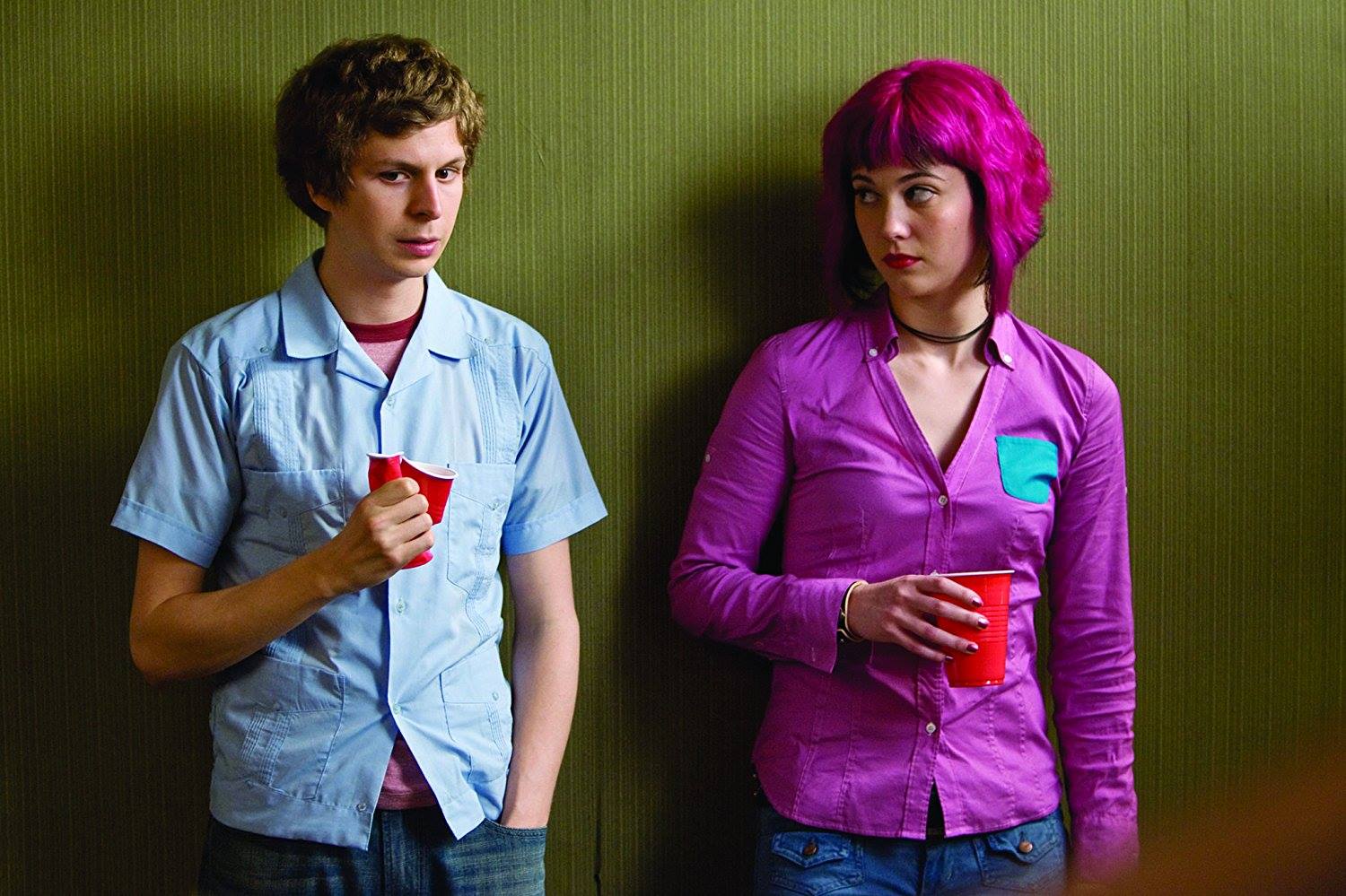By Joëlle Koorneef
If you have ever watched any movie starring Zooey Deschanel, you might be familiar with the Manic Pixie Dream Girl. She is the ukulele strumming beauty who rollerskates into the life of a poor sad boy to charm him with her pastel hair and deep dark history. She is typically the love interest of Michael Cera or Jesse Eisenberg or any average looking indie anti-hero. The term Manic Pixie Dream Girl (MPDG from now on) was coined by film critic Nathan Rabin.
“It’s an archetype, I realized, that taps into a particular male fantasy: of being saved from depression and ennui by a fantasy woman who sweeps in like a glittery breeze to save you from yourself, then disappears once her work is done (1).”
Why do we find her in so many movies and why is it problematic?
“When I’m around you, I kind of feel like I’m on drugs. Not that I do drugs. Unless you do drugs, in which case I do them all the time. All of them.” Scott, Scott Pilgrim VS. The World.
Let’s introduce the male protagonist who stars opposite our MPDG. I will call him the Slacker Boyfriend. He is sad, heartbroken, wears the same t-shirt for four days and is usually obsessed with indie games or music. He lives a boring life until the second the Manic Pixie Dream Girl rolls into his life (note: they usually own a pair of rollerskates or a scooter). He instantly falls in love because she is not like other girls. She usually likes cool music (remember how in 500 Days Of Summer Tom is totally convinced Summer is The One because she knows The Smiths; if it were that easy, where is my rom com?). She is impulsive and teaches Slacker Boyfriend to live a little. When they are together, Slack Boyfriend can finally be himself, because this shiny mythical creature can love him for who he is. After having turned his life upside down, she leaves, usually out of fear of commitment or some other unresolved issue from her mysterious past. But it is all okay though, because the male protagonist now knows he deserves love and is enlightened by her mindful philosophy. This is the classic plot of a MPDG film, easily summarized as ‘girl saves boy by showing romantic interest’. My apologies for being heteronormative in this article, the overwhelming majority of these cases center around a heterosexual couple.

Photo: Adventureland
Source: https://flavorwire.files.wordpress.com/2015/08/adventureland.jpg?w=900
“It’s these cards and the movies and the pop songs, they’re to blame for all lies and the heartache, everything.” Tom, 500 Days Of Summer
Hollywood is lying to us. The Manic Pixie Dream Girl does not exist, but that does not mean we are not trying to find her or be her. Michael Cera’s all over the world believe they can be mediocre and lazy and still deserve an eccentric artsy girl to lift them up. The mysterious dream girls in your favourite indie films leave real life boys and girls with expectations that are unfair. This is how Mindy Kaling summarizes the essence of the MPDG in her New Yorker article: “But she is essential to the male fantasy that even if a guy is boring he deserves a woman who will find him fascinating and perk up his dreary life by forcing him to go skinny-dipping in a stranger’s pool (2).” The overused Hollywood trope will keep guys looking for some ethereal creature and girls with a bad role model. Even though I aspire to be as cool as Ramona Flowers, it is just not fair to assume that girls who are into cool music, act quirky and are overall a bit pretentious exist just to brighten up some dull dude’s life. I have also been guilty of thinking I could fix a boy just by being ‘not like other girls’, just as I have been guilty of clamping onto a Manic Pixie Dream Boy, with his poetry and tortoise shell glasses, myself. The overrepresentation of the MPDG in film leaves girls with a fixing problem and boys with a need to be fixed.

Photo: Eternal Sunshine of the Spotless Mind
Source: https://thoughtcatalog.com
“Too many guys think I’m a concept, or I complete them, or I’m gonna make them alive. But I’m just a fucked up girl who’s lookin’ for my own piece of mind; don’t assign me yours”. Clementine, Eternal Sunshine of the Spotless Mind
As an oddball with some battle scars we only get to know the MPDG at surface level. If she has a problem, then that is only resolved as far as the guy is involved (Scott Pilgrim VS. The World), their stories are often told from the poor male mortal’s perspective (The Virgin Suicides), their erratic actions leave the viewer feeling sorry for the male protagonist (500 Days of Summer). Luckily, there are some self-aware Manic Pixie Dream Girls, such as Clementine in Eternal Sunshine of the Spotless Mind, who clearly illustrates the problem that she encounters in the quote above. Ramona Flowers initially does not end up with Scott Pilgrim, believing that he should be with his normal high school girlfriend, but she defies her purpose as a MPDG (changing his life and then leaving) by staying with him. Author John Green also likes to think he defies the MPDG trope with his novel Paper Town, which he claims could also have been called The Patriarchal Lie of the Manic Pixie Dream Girl Must Be Stabbed in the Heart and Killed (3). I find it hard to believe that John Green is anti-MPDG when he is responsible for sappy lines like “She taught me everything I knew about crawfish and kissing and pink wine and poetry. She made me different (4)”. His Alaska, Margo, and maybe even August are some of the most pronounced Manic Pixie Dream Girls (and Boy) in young adult literature, even if he fights really hard to beat this claim.
The whole debate leaves us with the question if we should erase the Manic Pixie Dream Girls from our lives or not. I will be perfectly honest and say that, yes, they are just so much fun and inspire to be more pretentious every day. But they do have very little agency, never pass the Bechdel test and serve as a shiny accessory to the sad life of the male protagonist. Even the creator of the term Manic Pixie Dream Girl regrets that he ever did so: “I feel deeply weird, if not downright ashamed, at having created a cliché that has been trotted out again and again in an infinite Internet feedback loop (5).” So let’s stop this cliché. Let’s get some well-written female leads on screen. Maybe she can still even like The Smiths and bubblegum and rollercoasters without having to like a #sadboy? It would truly be revolutionary.
Joëlle Koorneef, Class of 2017, is a literature and antiquity major from Zwijndrecht, The Netherlands
(1) “I’m sorry for coining the phrase “Manic Pixie Dream Girl” Nathan Rabin, Salon.com, 2014 https://www.salon.com/2014/07/15/im_sorry_for_coining_the_phrase_manic_pixie_dream_girl/
(2) “Flick Chicks, A guide to women in the movie” Mindy Kaling, The New Yorker, 2011
(3) John Green’s Tumblr http://fishingboatproceeds.tumblr.com/post/57820644828/hey-john-i-was-just-wondering-what-your
(4) John Green, Looking For Alaska, 205
(5) “I’m sorry for coining the phrase “Manic Pixie Dream Girl”, Nathan Rabin for salon.com, 2014 https://www.salon.com/2014/07/15/im_sorry_for_coining_the_phrase_manic_pixie_dream_girl/

